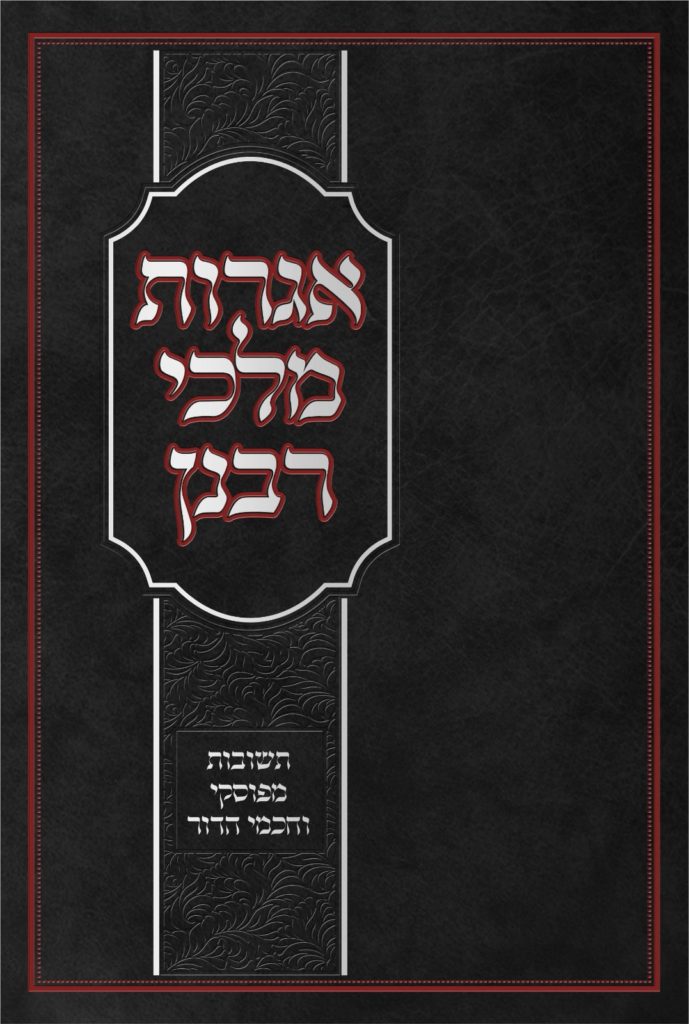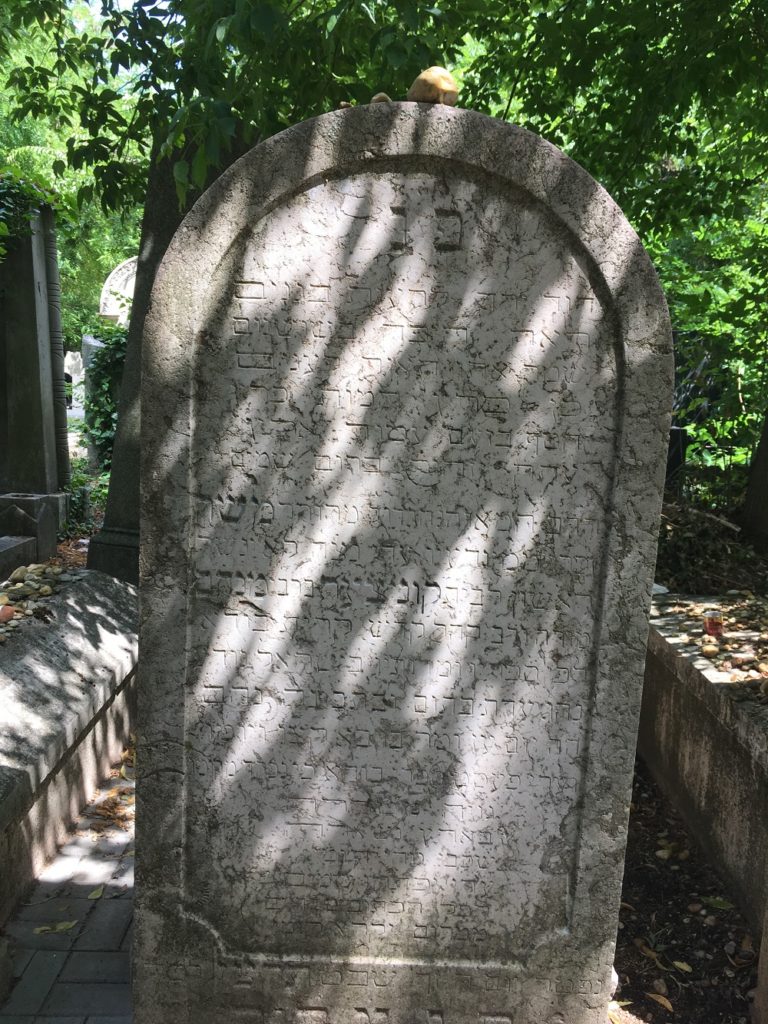Antoninus, R. Moses Kunitz, and Iggerot Malkhei Rabbanan
Antoninus, R. Moses Kunitz, and Iggerot Malkhei Rabbanan [1]
Marc B. Shapiro
Continued from here
Returning to our discussion of Antoninus, we now come to a figure we have often dealt with in previous posts, R. Moses Kunitz, who for some reason has become much more controversial in recent years than he was during his lifetime.
In his biography of R. Judah ha-Nasi, found at the beginning of the Vilna Mishnayot, R. Kunitz writes as follows:
(ומערה היתה פתוחה לפני בית רבי בעיר טבריא שהיתה גדולה מאד והגיע עד בית מלך בעיר רומי כמאמרם (עבודת כוכבים י ב
Kunitz tells us that there was a cave near R. Judah’s house that led to a tunnel that was very long and connected Tiberas with the house of the king in Rome, as the Talmud states in Avodah Zarah10b.
Yet contrary to what R. Kunitz states, Avodah Zarah 10b does not say anything about a magic tunnel. It states as follows: “Antoninus had a cave which led from his house to the house of Rabbi.” This must mean that Antoninus (who has not been identified with any certainty) had a house in the land of Israel in the vicinity of R. Judah’s house.[2]
Before looking at where R. Kunitz would have got his story about the magic tunnel, I must note that this very passage of R. Kunitz was the focus of an attack on him in Yated Ne’eman by Reuven Elitzur.[3] Elitzur’s article is titled צלם בהיכל, which gives you an idea of how strong his article is going to be.
Elitzur begins by mocking R. Kunitz’s statement that there was a tunnel going from Tiberias to Rome, which is much longer than even the longest tunnel in the world today. He adds that those who know the passage in Avodah Zarah referred to by R. Kunitz will be even more astounded. Not only does it not say anything about a tunnel to Rome, but it also speaks of Antoninus often visiting R. Judah, which according to R. Kunitz would mean that he went back and from Rome to Tiberias. Elitzur mocks R. Kunitz by adding: “this was, of course, through the miracle of ‘kefitzat ha-derekh’.”
Elitzur seems convinced that no one could be so stupid as to suggest that Antoninus had access to a magic tunnel. So where does that leave R. Kunitz who, it needs hardly be said, was not stupid at all? Elitzur explains that Kunitz’s entire point must have been to mock the Talmud. Whereas the Talmud does not say anything about Antoninus being in Rome, R. Kunitz adds this and then explains about the magic tunnel. Any normal reader seeing that the Sages believed that Antoninus had a magic tunnel will be led to mock them, which according to Elitzur was exactly R. Kunitz’s point, namely, to undermine the authoritativeness of the Talmud. As Elitzur puts it, readers of Kunitz’s essay, who do not know that the Talmud mentions nothing about a tunnel from Rome to Tiberias, will ask, “Is it possible to believe the words of those who are capable of writing such an absurd thing?”
Elitzur’s attack on R. Kunitz, which has a good deal more than this one point, paid off for him. Following the appearance of his essay in Yated Ne’eman, R. Nissim Karelitz ruled that R. Kunitz’s biography of R. Judah ha-Nasi should be removed from new printings of the Mishnayot, as he was not a faithful Jew.[4] Today, I do not think that any new printings include R. Kunitz’s essay.
Let me leave aside for now Elitzur’s general ignorance of the history of R. Kunitz and his relationship with the rabbinic world .[5] Instead, I wish to focus on the magic tunnel which Elitzur uses to defame R. Kunitz.
Moses Alshekh writes as follows in his commentary to Song of Songs 7:6:[6]
הנה זה יובן במאמר רבותינו ז”ל (עבודה זרה י ב) כי מערה אחת היתה בין צפורי שהיה בו רבי, לרומי שהיה דר בו אנטונינוס
Similar to R. Kunitz, R. Alshekh writes that Avodah Zarah 10b states that there was a tunnel between Sepphoris and Rome. As has already been mentioned, the Talmud says nothing of the sort. It does not mention Rome, or Sepphoris for that matter.
Following up on his mistaken statement that the Talmud in Avodah Zarah 10b refers to רומי, R. Alshekh notes the problem of the great distance between Rome and the Land of Israel and states that the Talmud is referring to the Galilean town Ruma, a place mentioned already by Josephus.[7] R. Alshekh also makes the interesting suggestion that when the Talmud[8] speaks of the Messiah sitting at the gate of רומי, it does not refer to Rome, as we are accumstomed to think, but to the Galilean town Ruma.
It seems that R. Kunitz made the unwarranted assumption that when the Talmud speaks of Antoninus’ house it had in mind his palace in Rome. R. Alshekh, however, mistakenly remembered the Talmud as actually using the word רומי, and this led to his suggestion that it must be referring to another place called רומי in the Land of Israel.
What about R. Kunitz’s suggestion of a magic tunnel? I have to say that Elitzur’s notion that R. Kunitz was trying to undermine respect for the Sages is ridiculous. It is obvious that by suggesting what he did, R. Kunitz showed a lack of sophistication, even for the nineteenth century. Indeed, anyone who examines R. Kunitz’s books will see a similar lack of sophistication throughout.
In describing R. Kunitz’s Ben Yohai, his most famous work, J. H. Chajes writes that it contains Kunitz’s “characteristic virtuosity, learned and dialectical, and an undeniable absurdity that did not escape the notice of scholars whose conservative inclinations should have made them natural allies.”[9] I would only add that people often forget that something that sounds crazy today could have sounded much more plausible in previous generations. While it is true that even in previous generations this particular suggestion of R. Kunitz was never taken seriously, it is a far distance from such rejection to conclude that he was trying to destroy the Sages’ reputation. Anyone who bothers to read his works will immediately see how wrong this conclusion is.
Information about R. Kunitz and his relationship to the rabbinic world, is found in the book I just published, Iggerot Malkhei Rabbanan.

This work contains more than thirty years of rabbinic correspondence sent to me by some of the most outstanding Torah scholars. It is currently for sale at both Biegeleisen and Mizrahi Books. The latter store is selling the book online here where you can also view the table of contents (or click here for a version which might be more clear). The book should also be available in Israel soon. Anyone in Israel who would like to acquire a copy should email me.
___________
[1] I had hoped that when Iggerot Malkhei Rabbanan appeared that I would have my regular size post ready. Unfortunately, this was not the case, but I did not wish to postpone the announcement of the new book so I figured that this “mini-post” would have to do.
[2] See Tosafot, Megillah 5b s.v. ve-ha:
נראה שהיה בטבריה בימי אנטונינוס כשהיו יחד
[3] Yated Neeman, parashat Shemot, 5757 (Musaf Shabbat Kodesh). The article is reprinted in Degel Mahaneh Reuven (Bnei Brak, 2011), pp. 350ff.
[4] R. Karelitz’s letter is printed in Degel Mahaneh Reuven, p. 356.
[5] I have been to R. Kunitz’s grave in Budapest many times. It is found together with the other communal rabbis, which is only natural as he served as a leading rabbi in both Buda and Pest. Here is a picture of the tombstone which I took a few years ago.

R. Leopold Greenwald, Mekorot le-Korot Yisrael(Humenne, 1934), p. 27, provided what he claimed is the text of R. Kunitz’s tombstone. But his version differs in a number of places from the original.
There are a few more points worth mentioning. R. Kunitz is the source that the Maharal (R. Kunitz’s forefather), recited the post-talmudic Birkat ha-Hamah without mentioning God’s name. See Kunitz, Ben Yohai, p. 141. Many halakhists know this report from R. Kunitz as it is mentioned by R. Akiva Eger in his note to Shulhan Arukh, Orah Hayyim 229.
R. Kunitz’s first volume of responsa, Ha-Metzaref, vol. 1, no. 20, contains a letter from R. Nathan Adler, which I believe is the only letter of his that ever appeared in print.
For previous discussions of R. Kunitz on the Seforim Blog, see Eliezer Brodt’s post here, and my posts here and here (in this post I include a previously unknown picture of R. Kunitz). See also Shimon Steinmetz’s post here that focuses on R. Kunitz’s responsa.
Those who are interested in R. Kunitz can also listen to my two classes on him here.
[6] (Jerusalem, 1990). This passage is also quoted by R. Jehiel Heilprin, Seder ha-Dorot (Bnei Brak, 2003), p. 412, Tannaim ve-Amoraim, s.v. יוסי בן קסמא
[7] Wars 3:7:21. This might be identical to the Rumah mentioned in II Kings 23:36. There is a tradition that none other than Reuben, the son of Jacob, was buried in Ruma, and other traditions include Gad and Benjamin as buried there. See Michael Ish-Shalom, Kivrei Avot (Jerusalem, 1948), pp. 104-105; Zvi Ilan, Kivrei Tzadikim be-Eretz Yisrael (Jerusalem, 1997), pp. 359-360; Avraham David, Al Bamatei Eretz ha-Tzvi (Jerusalem, 2013), p. 281.
[8] Sanhedrin 98a. This is the version in all manuscripts and older printings, before they were censored. See Dikdukei Soferim, ad loc.
[9] “Romanticising Rashbi: Moses Kunitz’s Ben Yohai,” Kabbalah 40 (2017), p. 75. My assumption was always that the main point of Ben Yohai was to defend the authenticity of the Zohar against R. Jacob Emden’s criticisms, and everything else in the book was secondary to this. However, Chajes shows that this is incorrect.